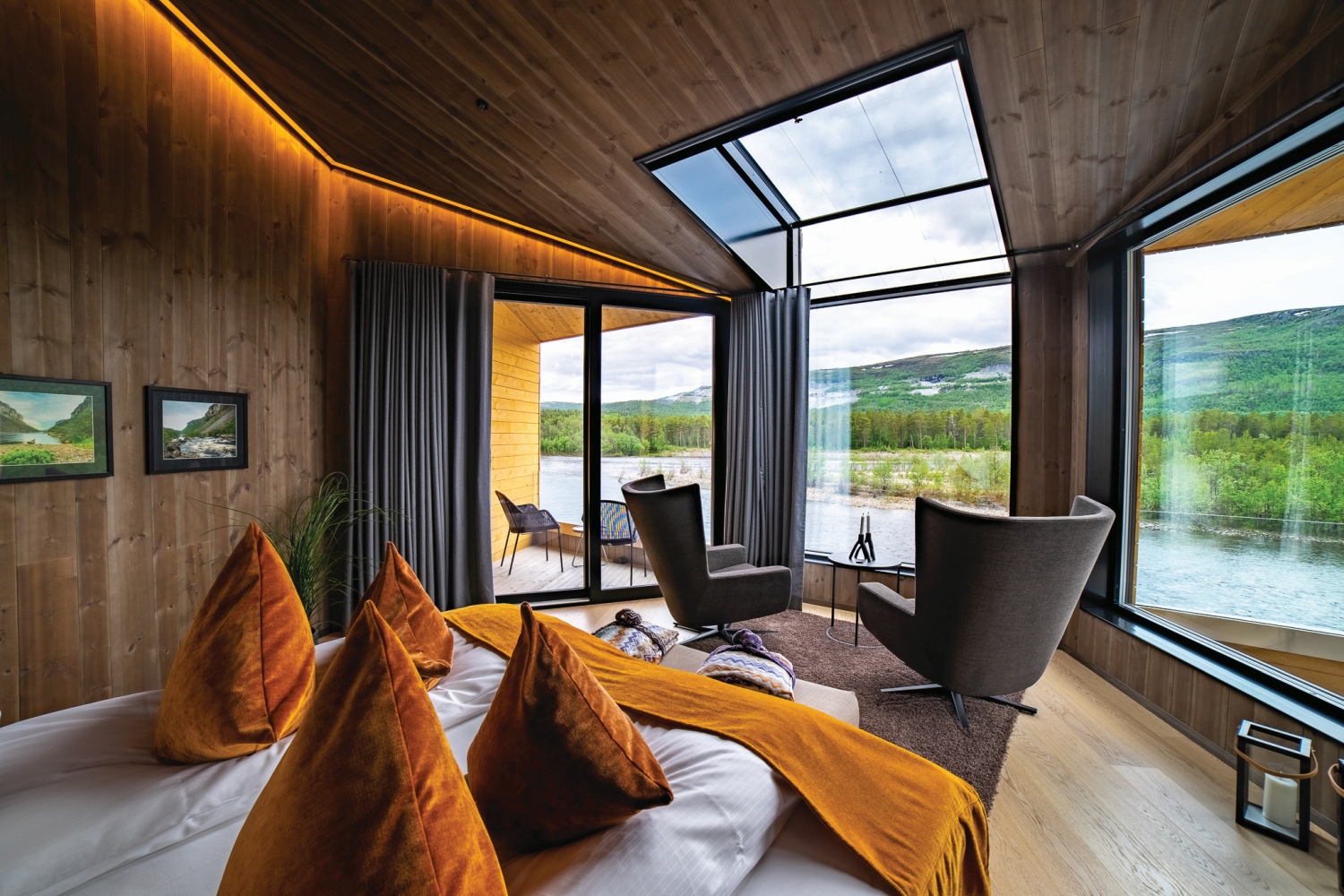- Details
- Written by: Dan Wildey
I first flew into Tromso a few years ago and it felt like one of the wildest, most remote places I’d ever visited. The plane was almost skimming the mountain tops on the descent, and our easterly heading meant I could stare out of the port-side windows and know the only thing further north was the frozen sea. I mention this because Tromso – romantically remote as it is – is a mere stop-off en route to the tiny town of Alta, today’s final destination, and a metropolis in comparison.
Yet as the plane comes to a halt on the Tromso tarmac, a surprising number of my fellow passengers stay seated. The onward journey, which will take 30-minutes by plane, would be a six-hour drive. The roads have to wind their way round the crinkly fjords that characterise this far northwesterly corner of the European continent. Alta isn’t quite the most northerly of Norway’s towns, but Oslo, down south, is closer to London than it is to here.
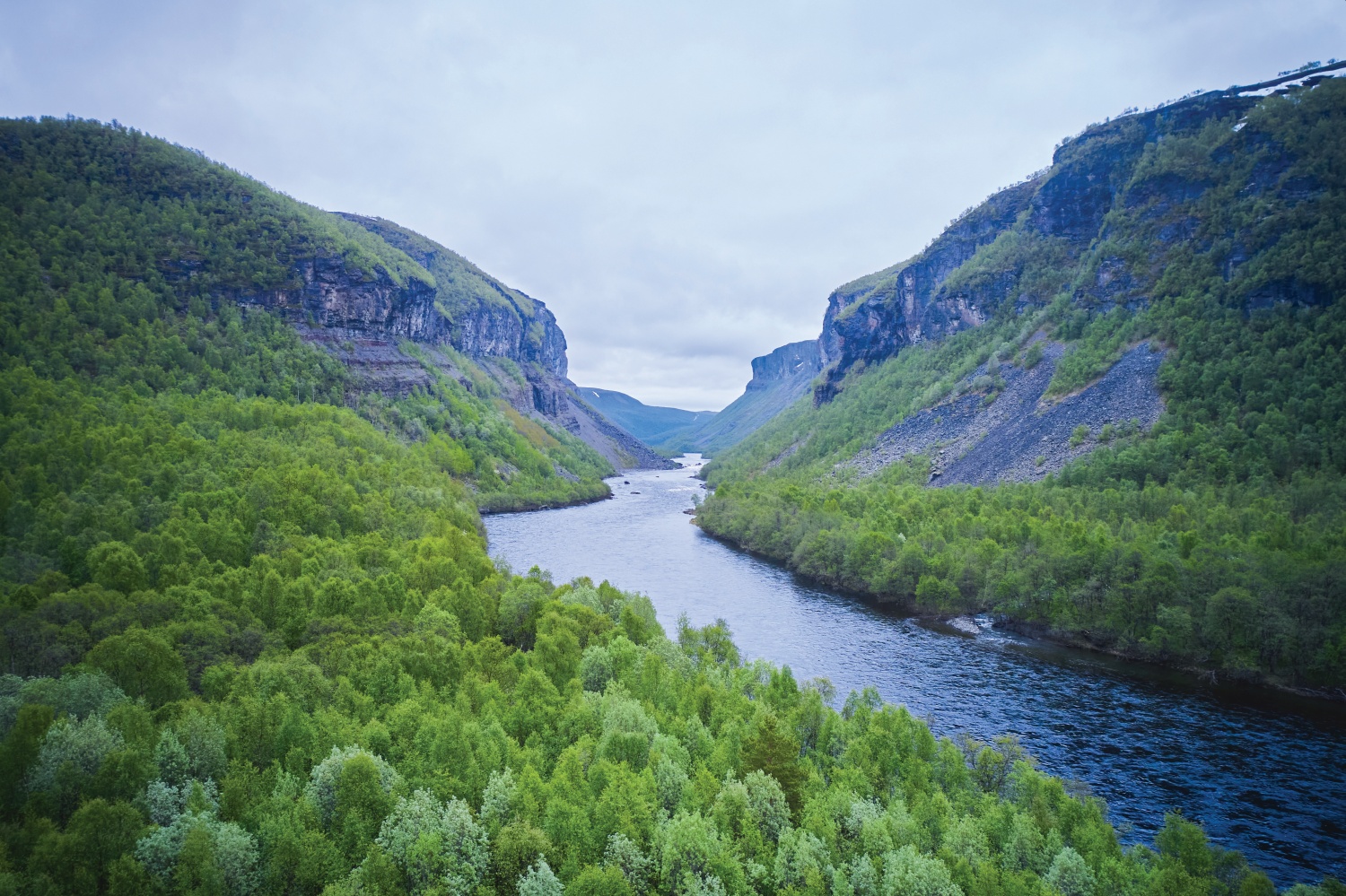
We arrive at the Sorrisniva Arctic Wilderness Lodge at 11.45pm in glorious sunshine. Up here in mid-June, the sun’s trajectory bottoms out a few minutes after midnight, and from then it just keeps on rising for 12 hours. But while the sun never dipped below the horizon during the three days of our visit, this was unfortunately the last time it made an appearance.
I quickly found, however that the lack of sun actually adds to the drama of such an empty and remote place. Alta’s tourist board uses the slogan “Next to nothing. Close to everything” There something about the statement that grows on you, in the same way the landscape does. It’s bold to admit to having nothing nearby. Or is it? ‘Admit’ isn’t the right word – this is a selling point. If you really want to enjoy what nature has to offer, what use are attractions and distractions? Escapism requires a blank canvas as its target, and the arctic tundra has more than a hint of that.
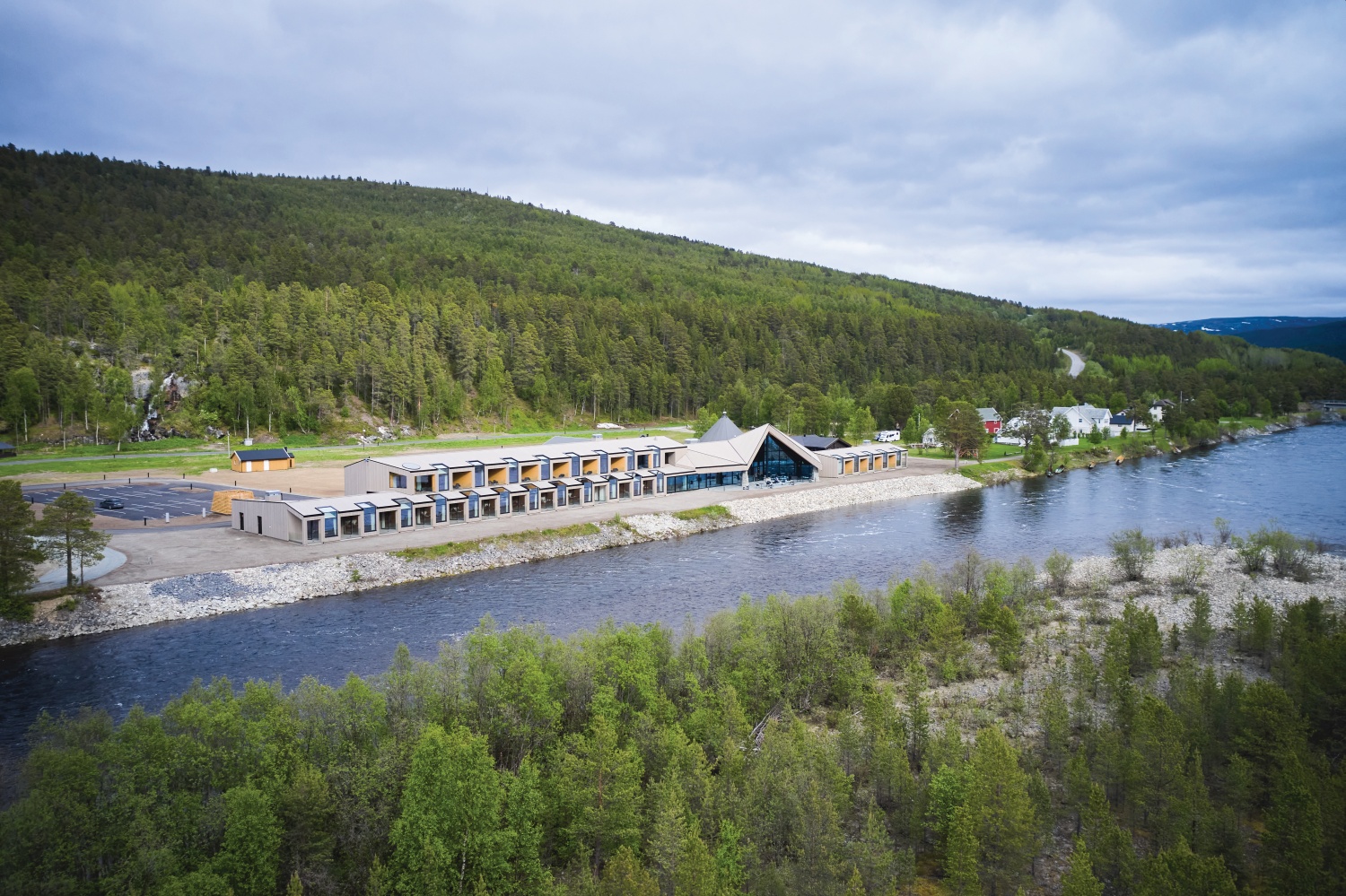
Something out of nothing
Sorrisniva itself provides the counterpoint to the nothingness. Which is good, because we do need somewhere to eat and sleep. Sure, we could have headed deep into featureless and hostile terrain to test ourselves. But why not do so from a luxurious base, and therefore treat yourself at the same time? The restorative properties of wilderness are only enhanced, I’ve found,by a hot-tub and a cocktail. Or as Caroline Laurhammer, CEO of Sorrisniva tells me “This is a place where you can choose to take a mental break and do nothing at all or find yourself on active and demanding adventures through the Arctic landscape.” The sweet spot, I think, is a combination of the two.
Built at a riverside location that has been a destination for nature lovers for over 130 years, the 24 rooms of the Arctic Wilderness Lodge are merely the latest addition to Sorrisniva. The original draw of the place was built on fishing, with the Alta River offering world class salmon fishing. There are over 4000 people who enter a lottery each year for the fishing license.
But only 700 people actually get a license to fish. Those who are lucky enough to win, must then be wealthy enough to use the permits, which cost up to £300 per day. Little wonder that Alta attracts royalty and aristocracy from all over Europe — although none more noble than the sea eagles that joined us on our own voyage up river.
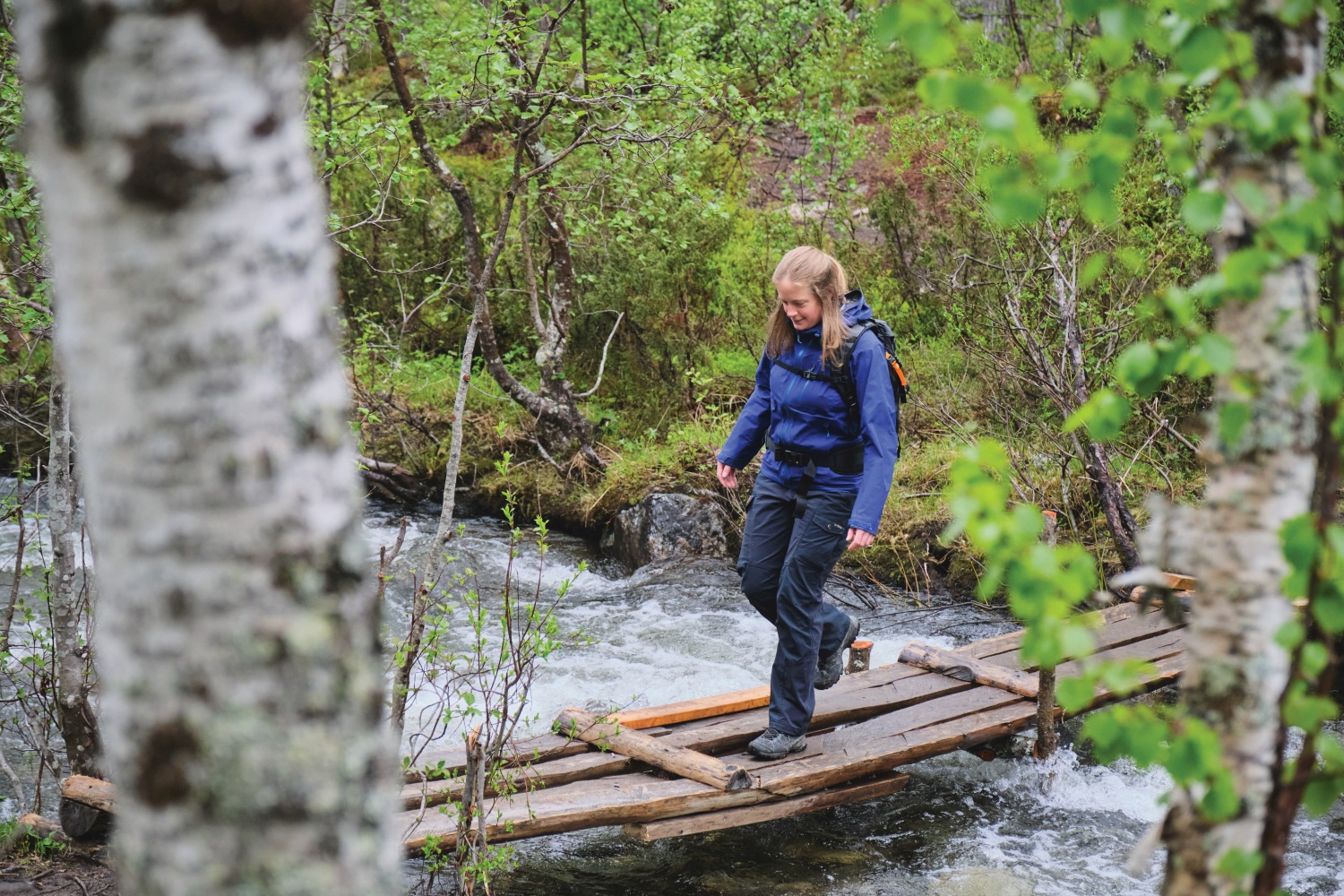
Despite its luxury reputation, there is nothing exclusive about Sorrisniva’s current offering. Sure, it is expensive, but everything in Norway is — judged in those terms the place is very good value. A graceful simplicity exudes from the building, as is so often the case with Scandinavian design. The architect – an Alta-born woman, now based in Trondheim – set out to mirror the skyline of the landscape directly behind the lodge, with a long flat-roofed accommodation section representing the plateau, and the tall apex of the spacious lounge and bar areas reflecting the peak that breaches the high plains.
Naturally the builders and craftspeople were all employed locally and most of the materials obtained as nearby as possible; the slate quarry which supplied the bathrooms and flooring is visible right across the river. If the build aimed to be in harmony with the surroundings, then the effect is transferred to the interiors – calmness abounds, in true Scandi style, and the simple lines all seem to focus your attention on the ever-present river.
Once you step outside the lodge, by contrast, the forest floor is a riot of colour and a glorious mess of biodiversity. Setting off on our first hike of the trip we’re almost immediately in the woods. We cross one of many makeshift bridges which spring up after the heaviest of the spring meltwaters have passed, and are then swallowed up with the kind of forest that just doesn’t seem to exist in the UK.
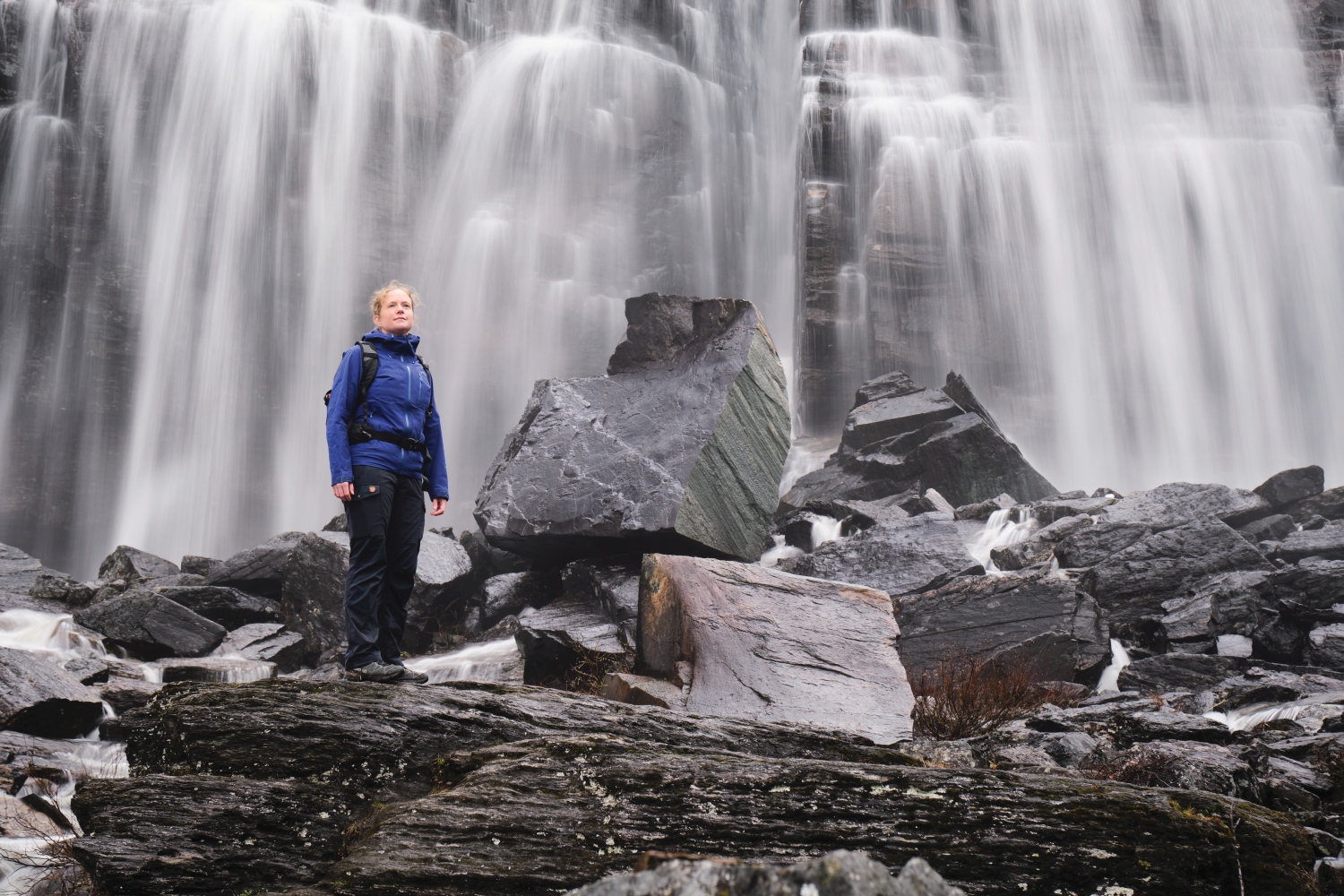
It’s not that it feels particularly ancient or huge, because fierce winds keep trees from ever getting too big here. But the real difference is the verdant carpet under foot. There are shades of moss and lichen that you could never imagine, and at the same time blueberry bushes waiting to be harvested at every turn. It may not make for the most varied of trail mix, but it’s certainly the freshest.
Our destination on this first, short exploratory hike, is the immense, Orvvosfossen waterfall which tumbles off the edge of the Finnmark plateau in wide sheets of meltwater. The contrast of the white spray against the wet-black slate adds to the drama of the place. Because the landscape here is scoured by strong winds and brutally cold winters, most of the interesting features are those sunk beneath the level of the horizon. So, waterfalls and the carved courses of tributaries are the landmarks, and none more so than the largest canyon in Europe, just a couple of hours boat ride north from Sorrisniva and our next adventure.
- READ NEXT: The Best Waterproof Jackets
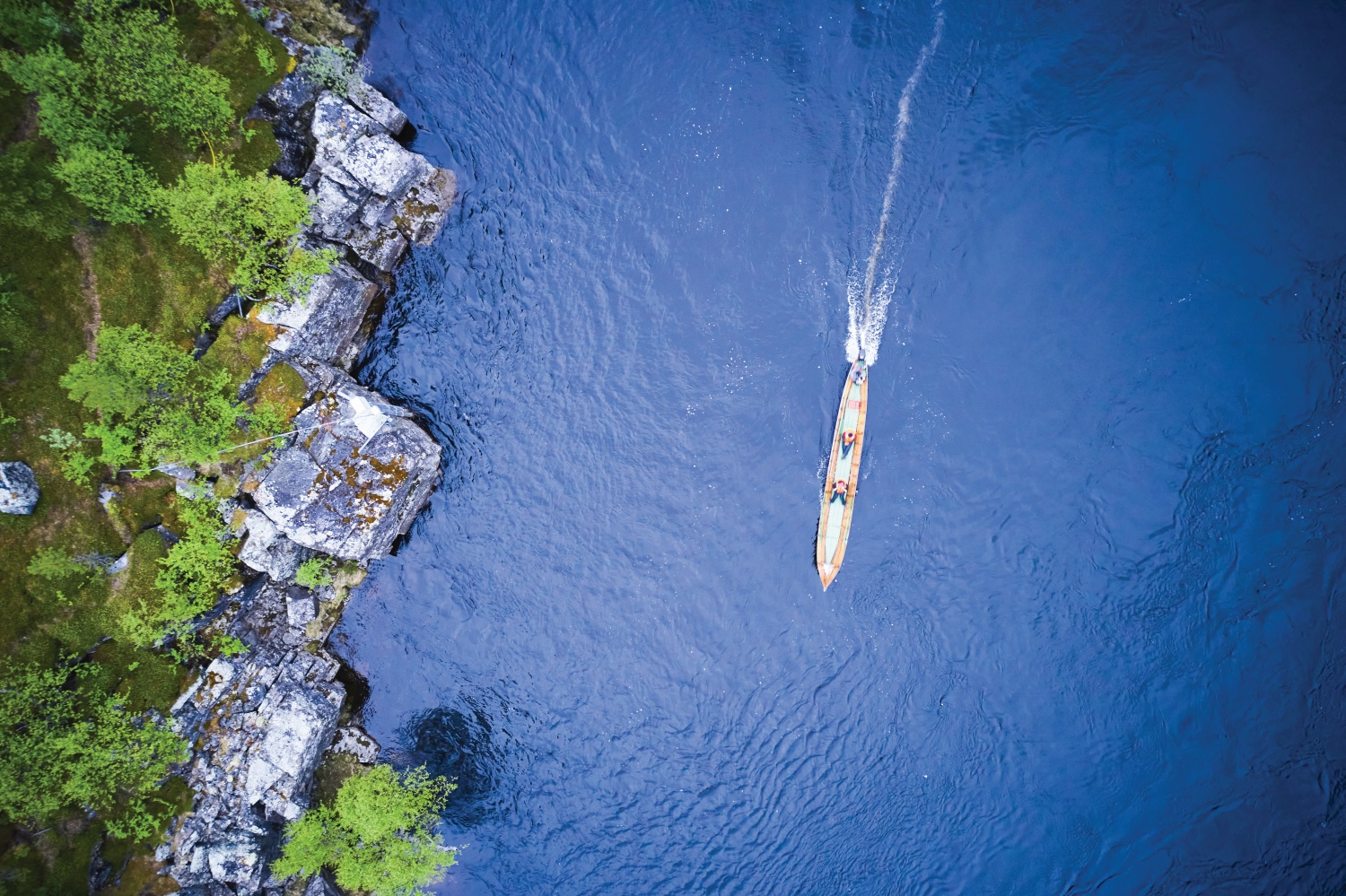
Beauty below the horizon
Jørgen, a fourth-generation river guide, steers our boat in an often-baffling zig-zag pattern to avoid the shifting sands of the riverbed. He also manages to cut through some fairly choppy waves with barely a jolt. This is partly thanks to the traditional style of the boat – 11 feet long, it sits low in the water – but largely thanks to Jørgen’s lifelong training on the Alta river.
The canyon itself is the type you can imagine dinosaurs emerging from; the scale is hard to fathom from our vantage point in the valley, although the ubiquitous waterfalls drop in a way that hints at the vertiginousness. At the northern entrance the rock forms the shape of a woman’s face in profile. To this day fishermen make offerings to this guardian of the river to bring luck to their expeditions. It seems an appropriately old-fashioned tradition for such a timeless place.
“Fishermen give her offerings to this day”
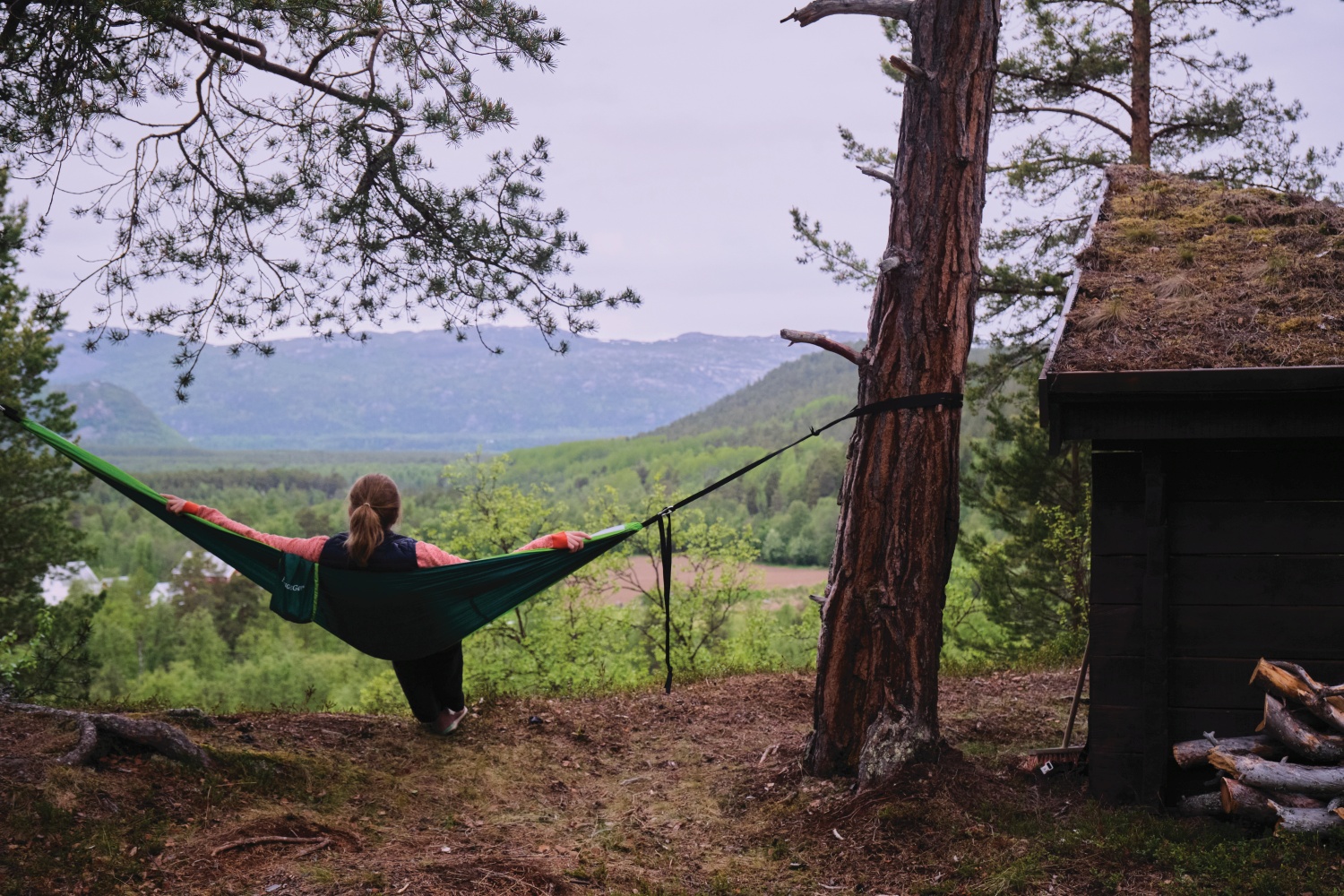
One unexpected side effect of the constant daylight is it’s difficult for your body and your brain to know when to start winding down. But Sorrisniva offers plenty of opportunities for relaxation and pampering, both outdoors and indoors. Following our day on the river we’re invited to try waterfall bathing before taking a dip in the hot tub. Then, a short after-dinner hike takes us to one of the typical Norwegian hut/firepit combos that seem to be installed and maintained by forest fairies, and are always immaculate.
Around 10pm we light a fire, recline in hammocks overlooking treetops and distant mountains, and settle into making pancakes while watching the sun not-set. It’s this approach to self-indulgence that makes Sorrisniva so special. Yes, you can get a cocktail at the bar, but the luxuries to be found in nature are embraced with just as much enthusiasm. In this part of the world the outdoors isn’t just somewhere you visit in your spare time. This is summed up in the idea of friluftsliv – literally outdoor life – which permeates everything here.
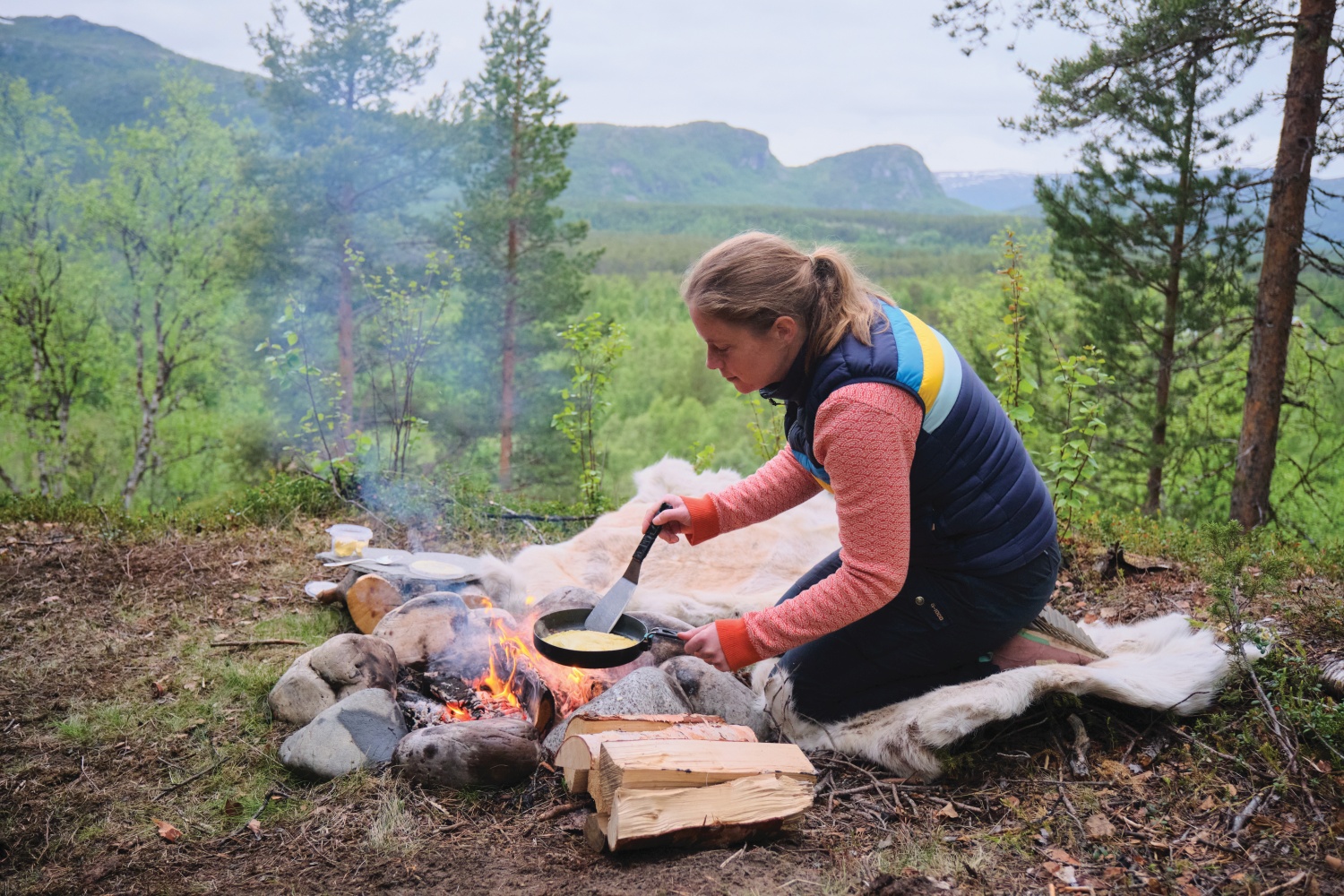
You might think the interminable darkness of winter would interrupt this way of living, but if anything, the locals seem to double down. Sorrisniva has in recent years been primarily a winter destination, boasting an enormous ice hotel which is rebuilt every season. Visitors come for snowmobiling, ice fishing and husky experiences. But of course, it’s the Northern Lights that are the biggest draw. Alta is known as the City of the Northern Lights.
There are three microclimates at work around the area, and if it’s cloudy at one or two of them, it’s very likely to be clear at the third. Alta is also the site of much of the early scientific research into the lights, and you can still visit the hilltop observatory where Kristian Birkeland developed his theories to explain the phenomenon.
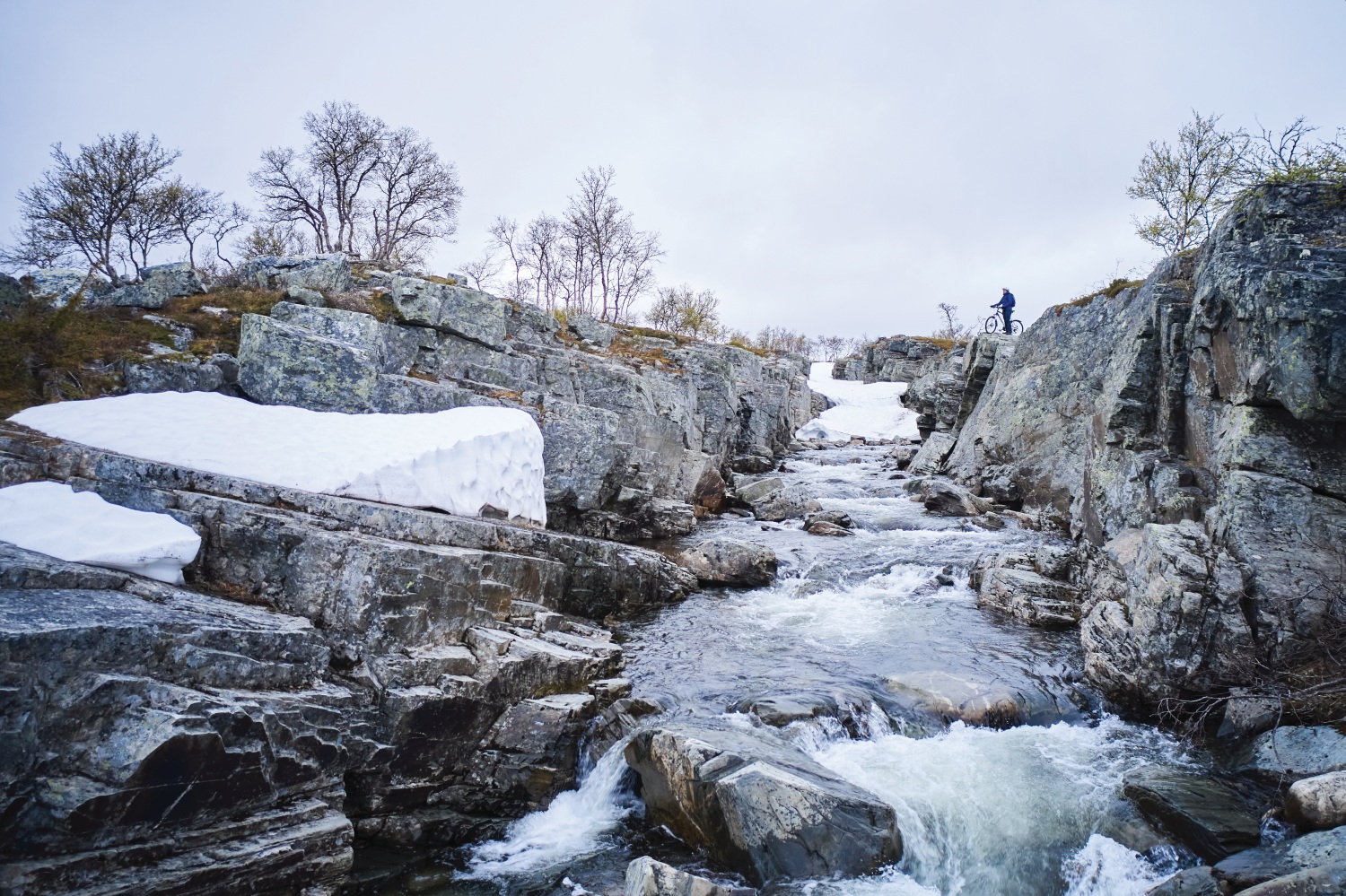
The power of the light
Of course, visiting in mid-summer we have a very different – but equally eerie – light show. Many people report disturbance in their sleep patterns when exposed to 24-hour daylight. The lodge has very effective black-out curtains, but I think the strangeness is less to do with the sleeping itself, and more to do with our preparations for sleep. By evening your body has normally been triggered to start thinking about ending the day – and it’s that lack of transition period that is strangest for me. On the other hand, copious amounts of fresh air can have a similar effect.
Our final day is probably our most adventurous as we strike out into the wilds of the Finnmark plateau on mountain bikes. A short climb to begin with takes us to what initially appears to be a barren expanse of nothingness. But as mentioned earlier, the beauty often lies beneath the skyline here, and as we cross the first of many babbling brooks within a small valley it becomes obvious we’ve been looking in the wrong place.
“The technical terrain keeps the ride interesting”
The trail itself is superb – undulating and with plenty of technical terrain to keep things interesting – but it’s frequently interrupted by the kind of obstacles that are great reminders that you’re in the wilderness; streams, snow patches, or boardwalks that have partially sunk into the mud. It’s certainly no groomed trail centre. We picnic by another sunken landmark – a dramatically carved-out river canyon – before our return journey and my favourite interruption of the ride; a small herd of reindeer on their spring migration to the sea.
One final treat awaits us at the lodge that evening. The eight-course fine dining experience in the Maku restaurant perhaps typifies what this place is about better than any other experience. The heavy focus on local produce means the whole dinner is a perfect expression of Sorrisniva’s ability to turn the simplicity of nature into a wholesome, grounded version of luxury.
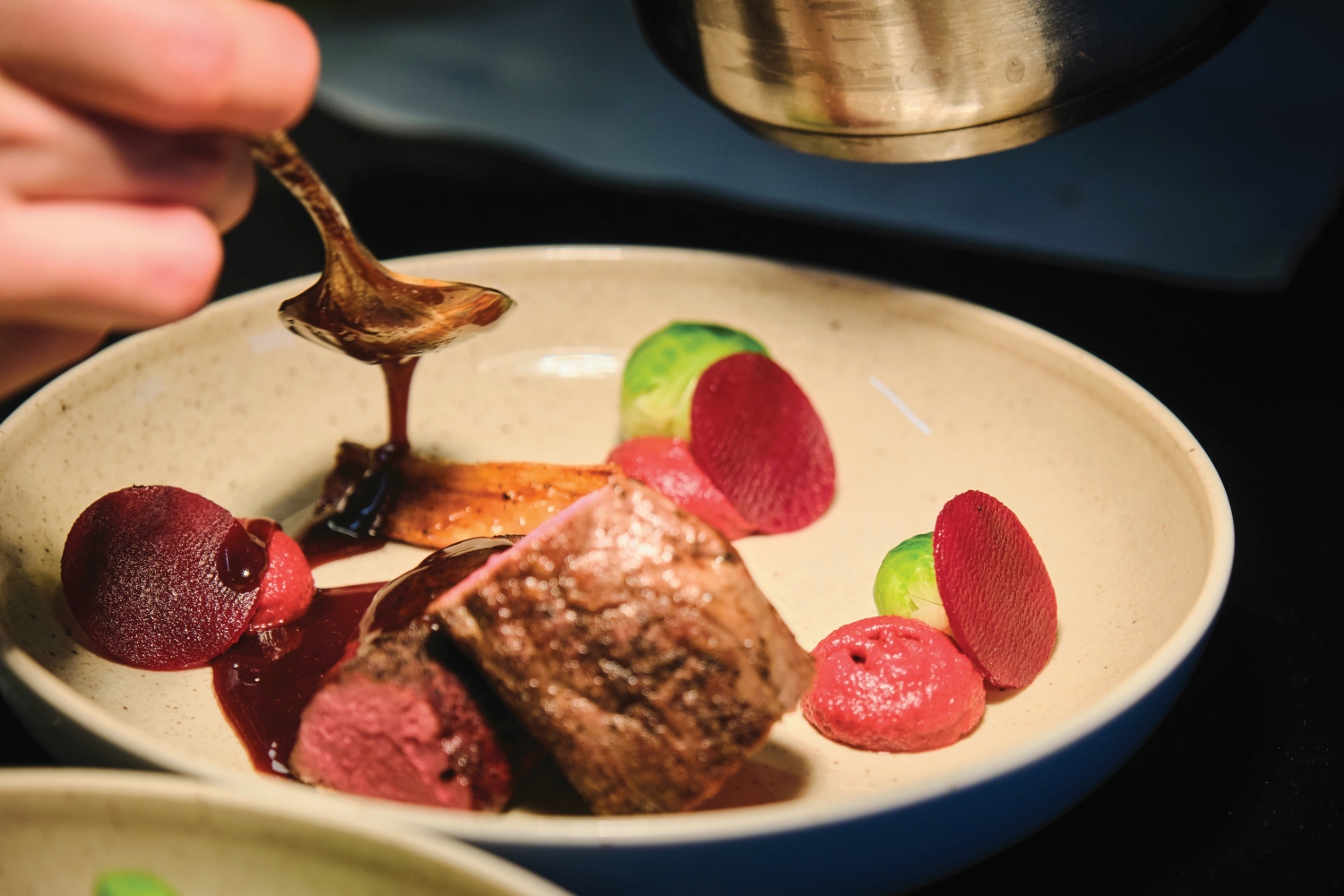
As head chef Lasse Ellingsen explains: “My passion is about the simplicity of being able to make food. It is inspiring with the ingredients that are available locally in our area, and it’s extra fun when I have time to harvest ingredients myself. This is the food that expresses Sorrisniva best. Salmon, reindeer and cloudberries are our raw materials.”
All three are undoubtedly superb, but the standout dishes for me are juniper-cured moose with hazelnut, Jerusalem artichoke, and lingonberries, which could hardly have been more evocative of the Norwegian woods, and a dessert named ‘Blackcurrants from the Boss’ Garden’ which is at once fresh and indulgent, and much more complex than it sounds.
You’ll find exhilaration at Sorrisniva, and you’ll also find ways to spoil yourself. But the package is so inextricably wrapped up in a friluftsliv attitude – and a kind of naturalistic elevation of our most base requirements, fire, water, shelter and food - that you can’t fail to come away with a certain internal calmness and a sense of connection to the world.
Travel info
Sorrisniva
Double rooms cost from £250 per night. The team can also tailor your trip to include a miraid of experiences ranging from riverboat trips and hiking, to husky rides and reindeer sledding under the spectacular Northern lights.
What to pack
Pack for all four seasons – or at least, bring a lightweight down jacket and walking boots. Weather is temperate in summer, but can be changeable.
Getting there
Norwegian operate regular flights from major UK airports to Alta, but a change at Oslo is usually required. Scandinavian Airlines and Wideroen are also options.
Getting around
Aside from excursions, you won’t need to leave the lodge - that’s no bad thing.
- READ NEXT: The Best Adventure Holidays

